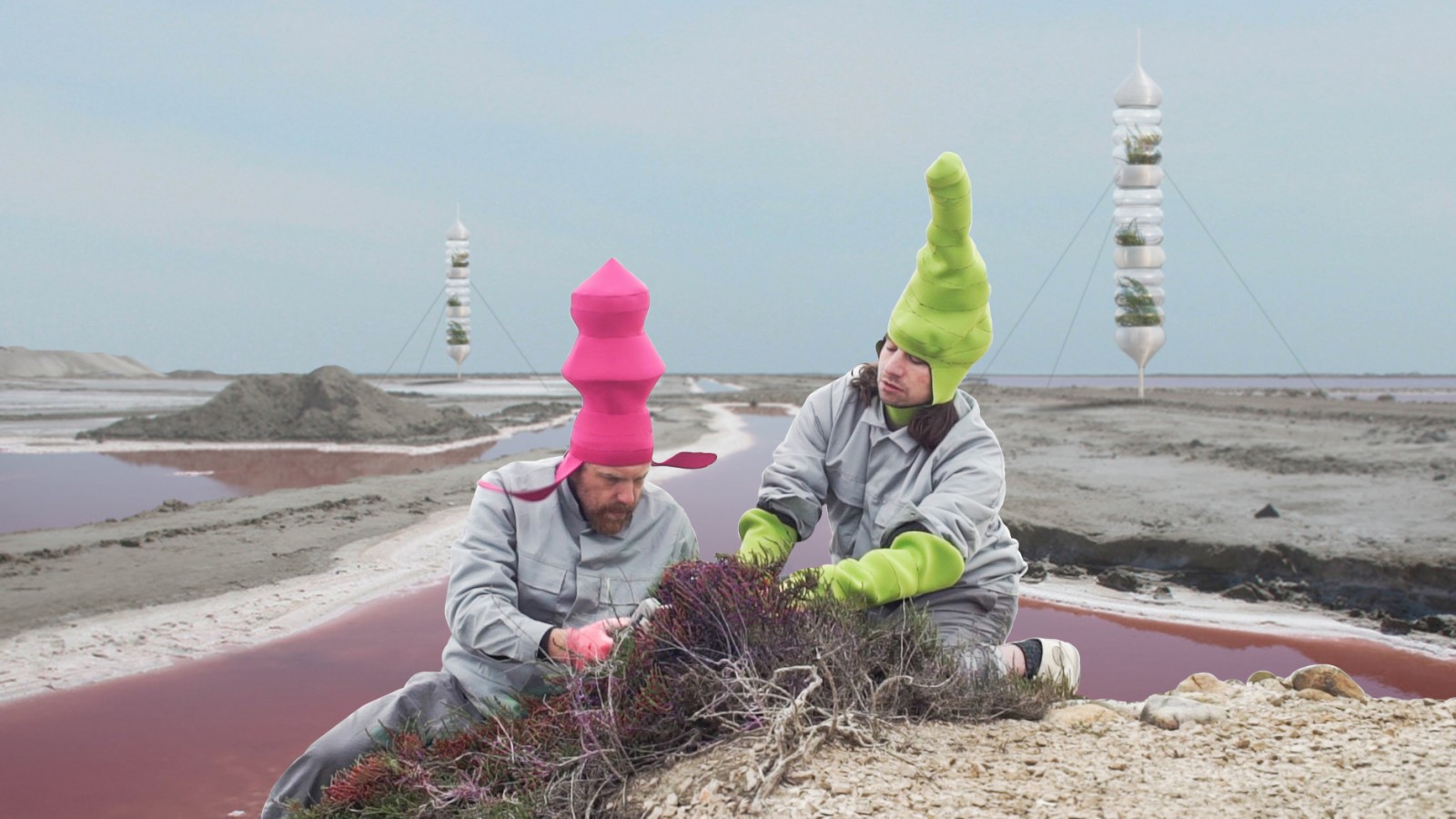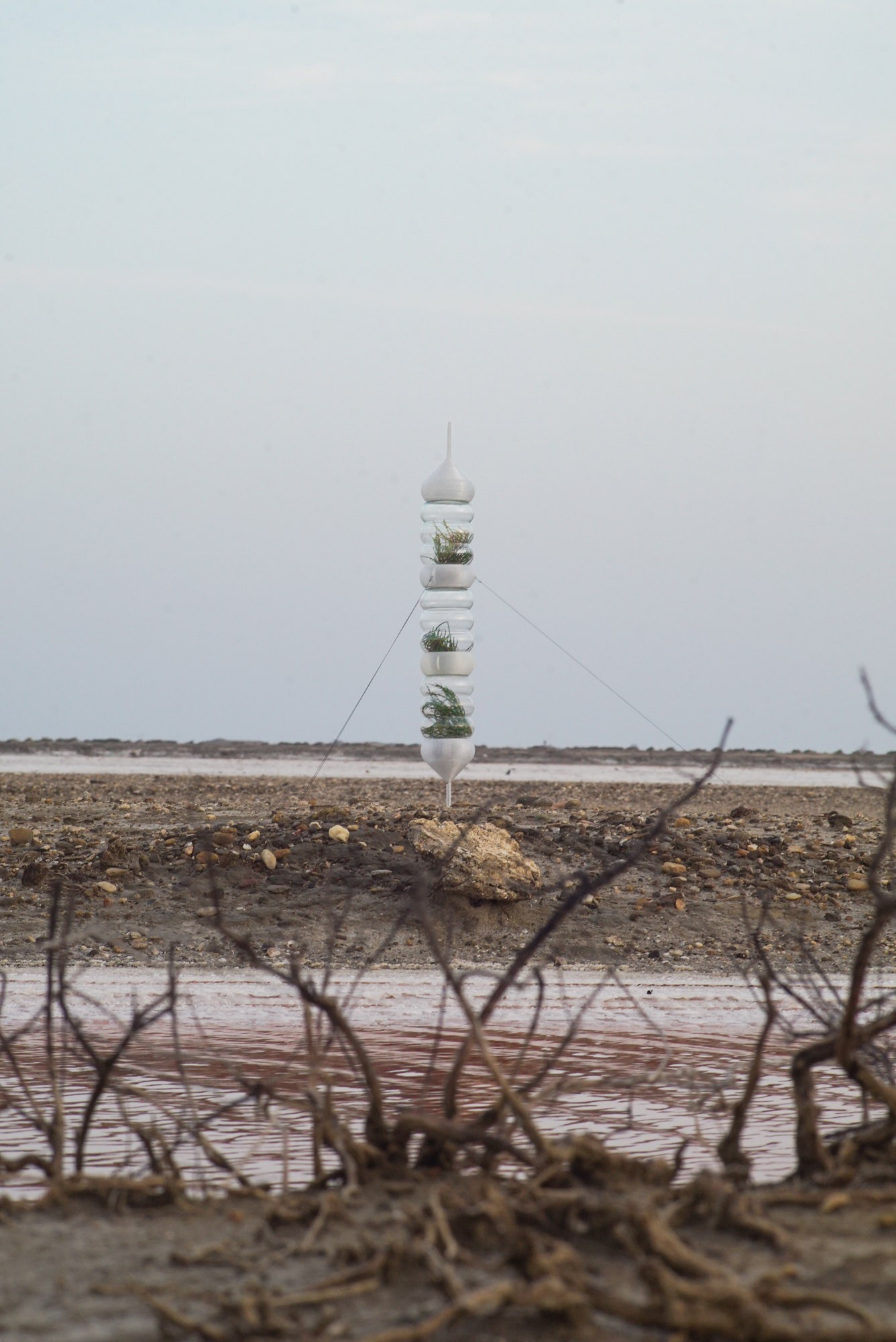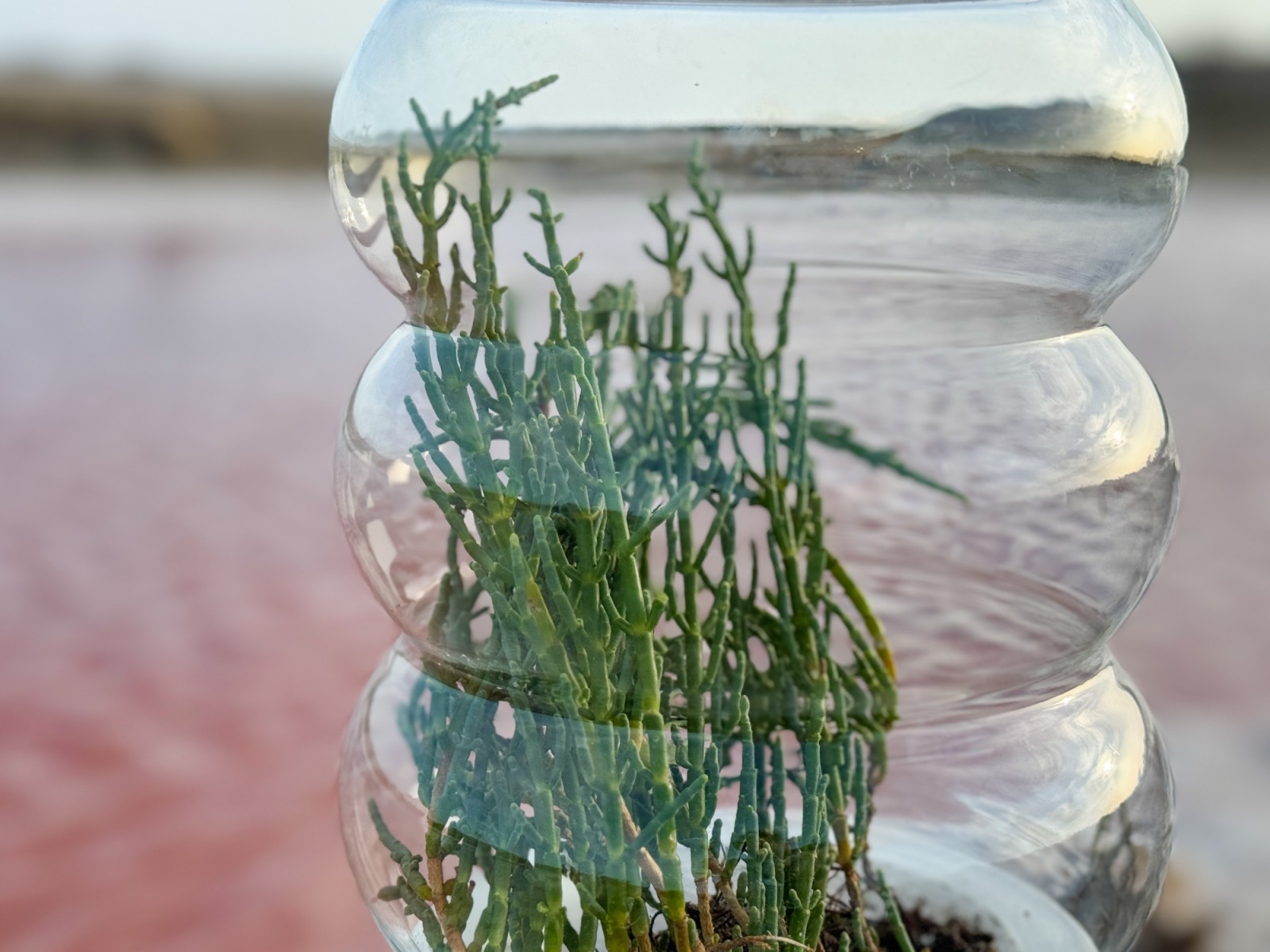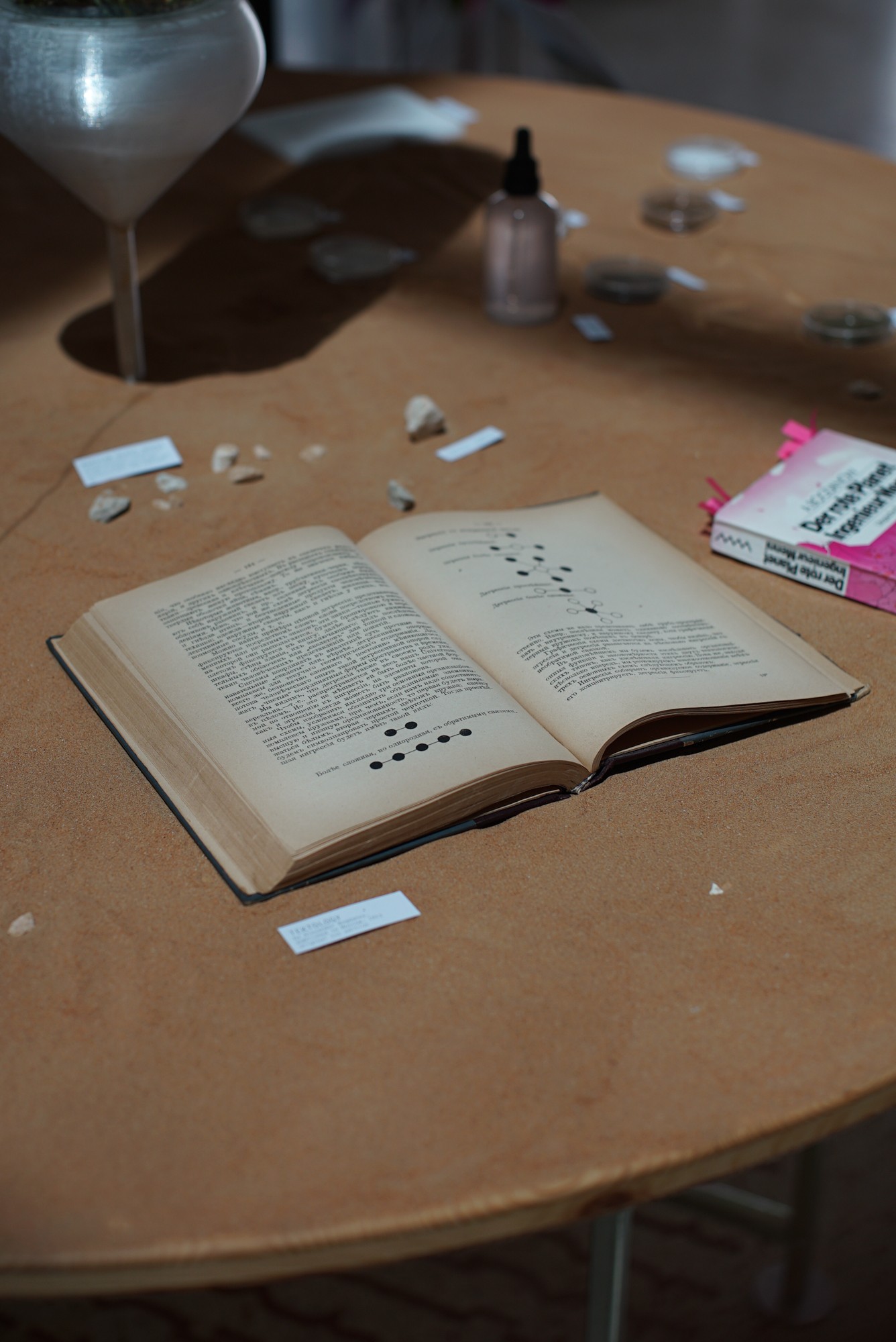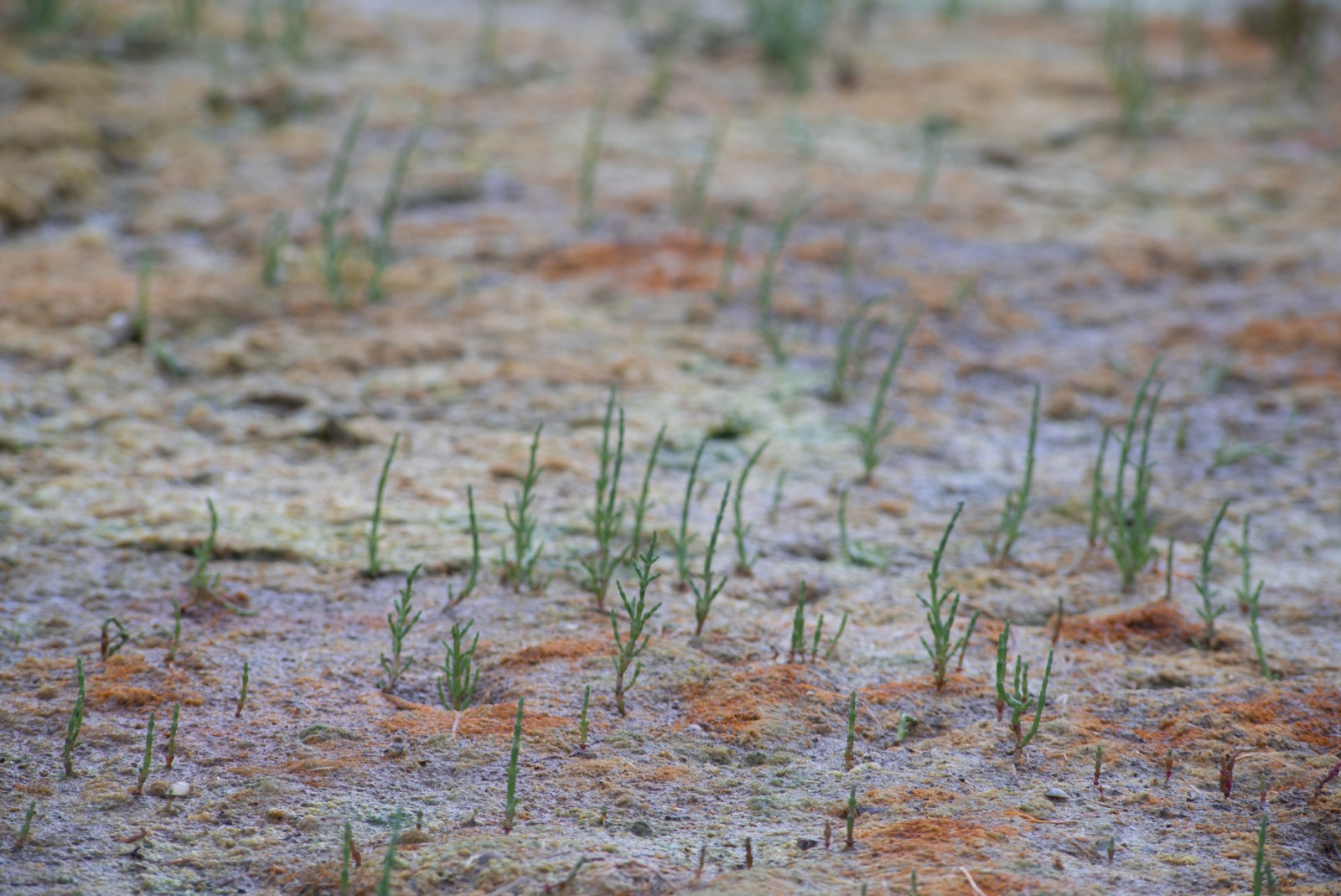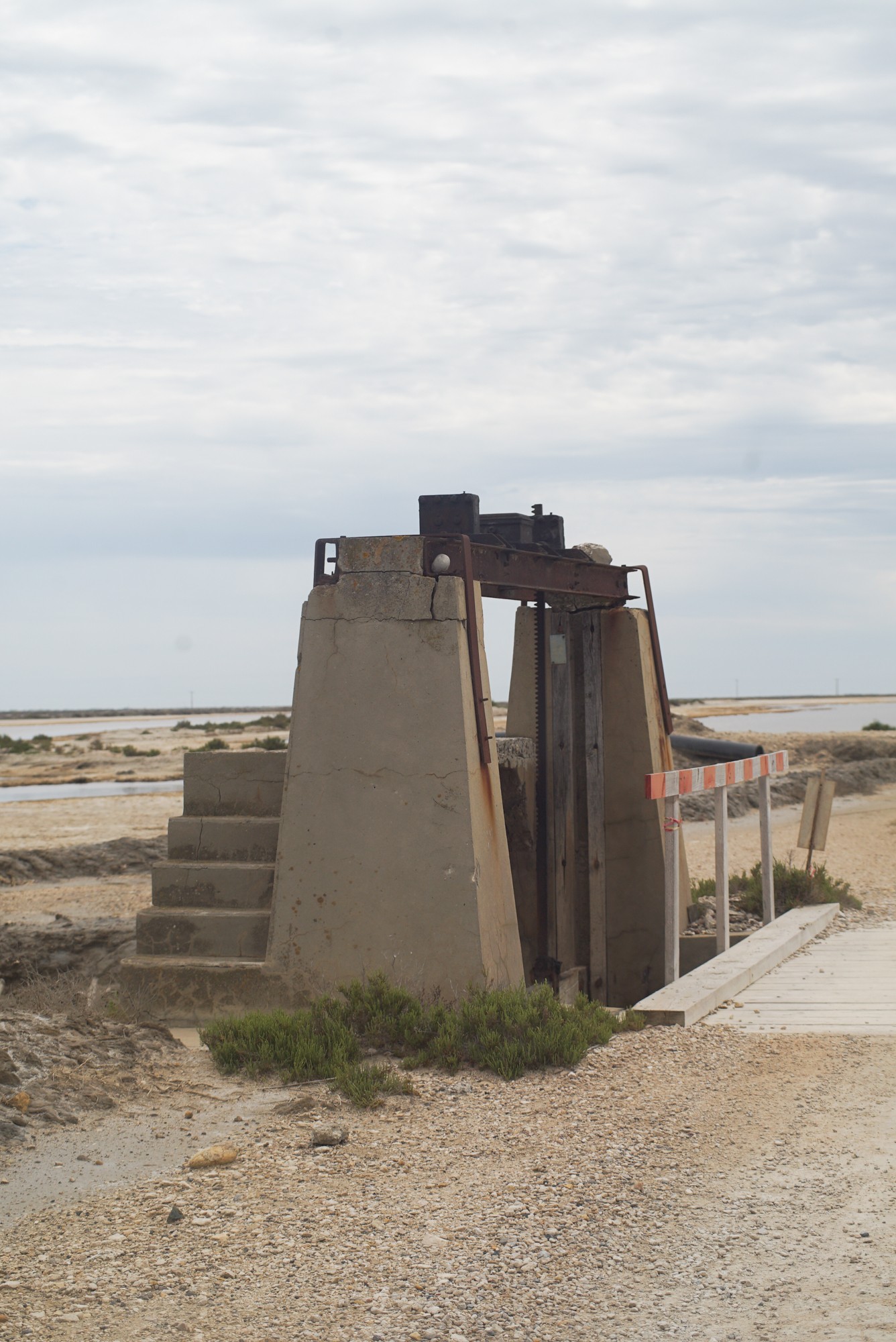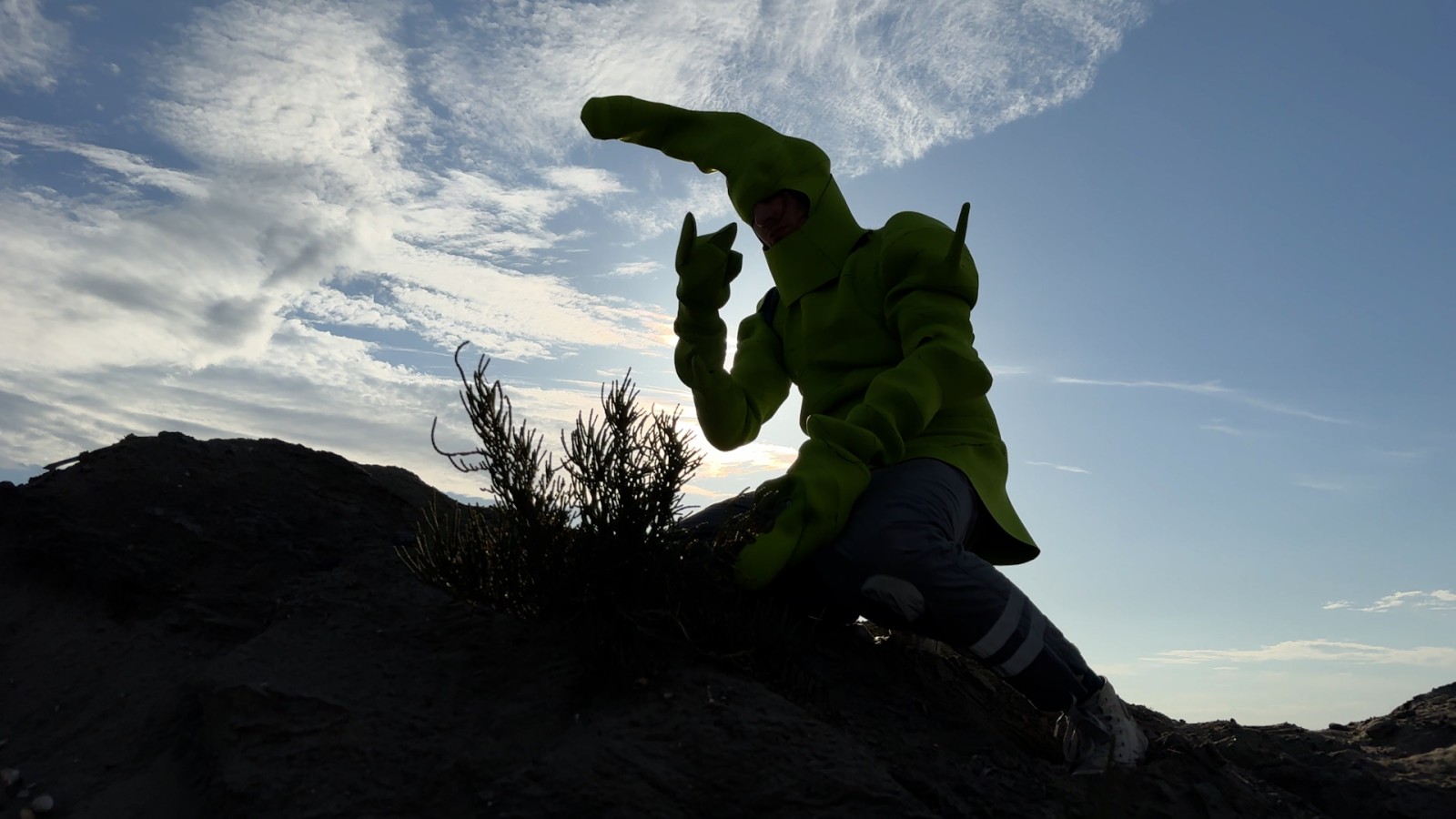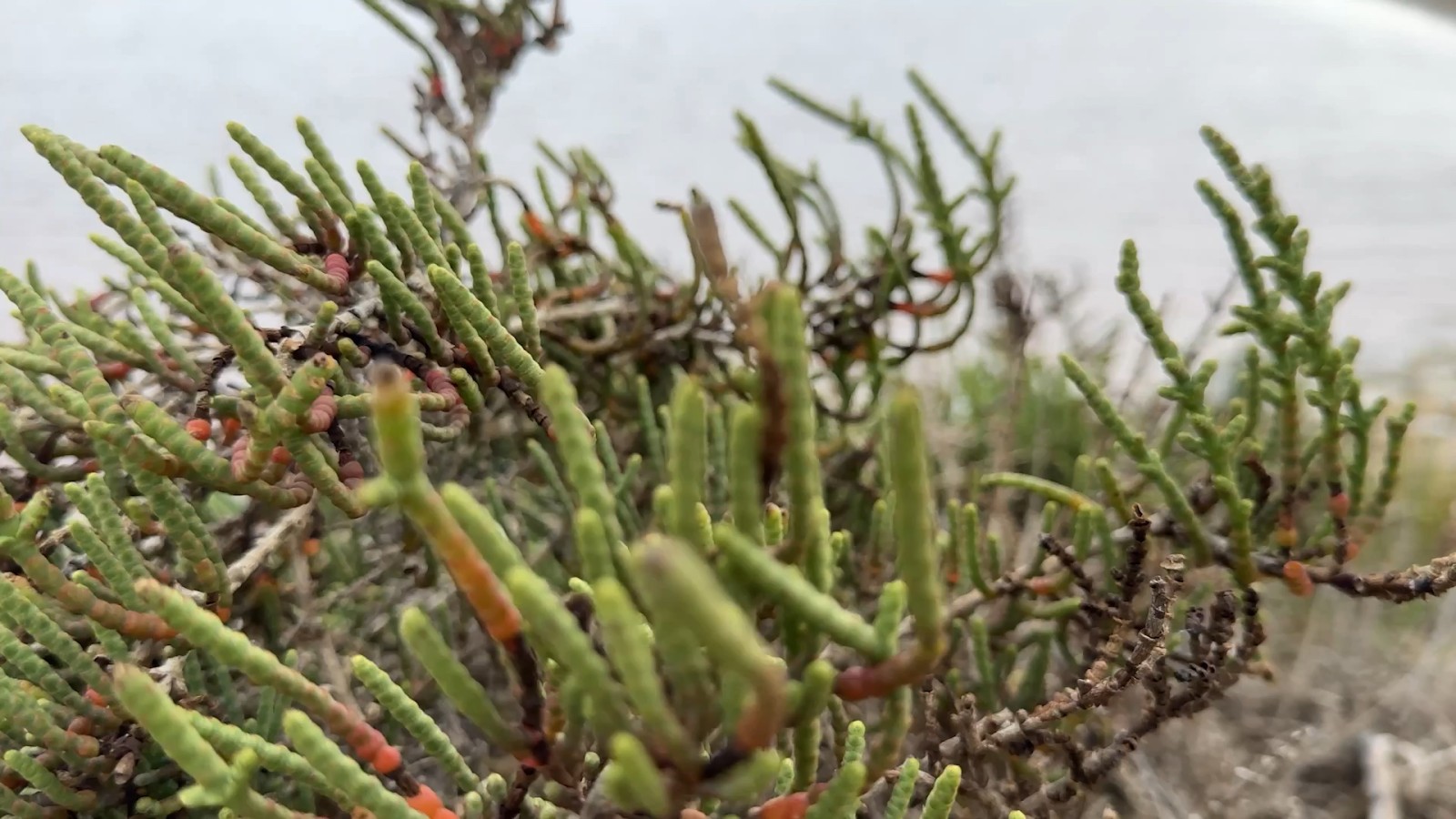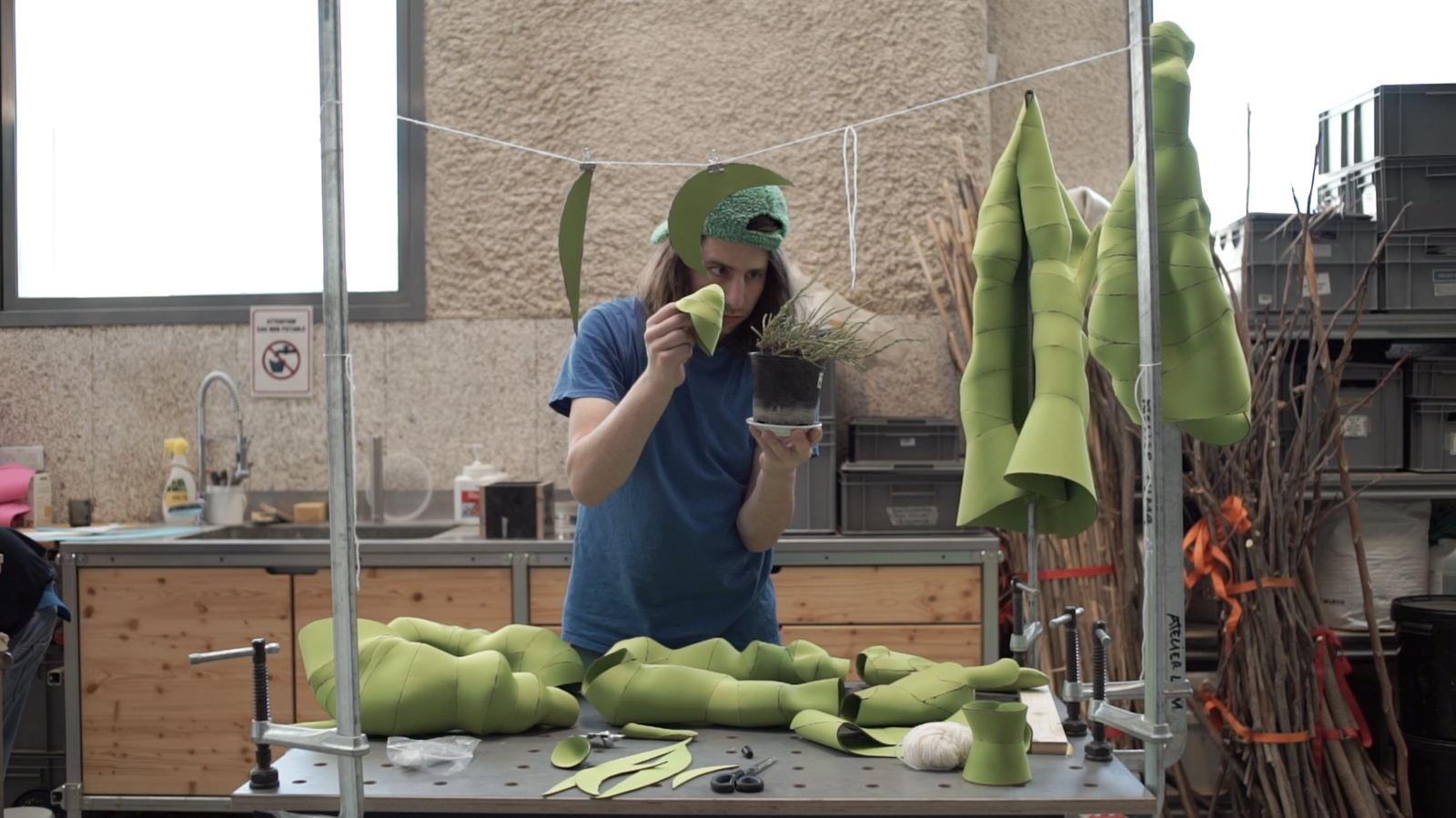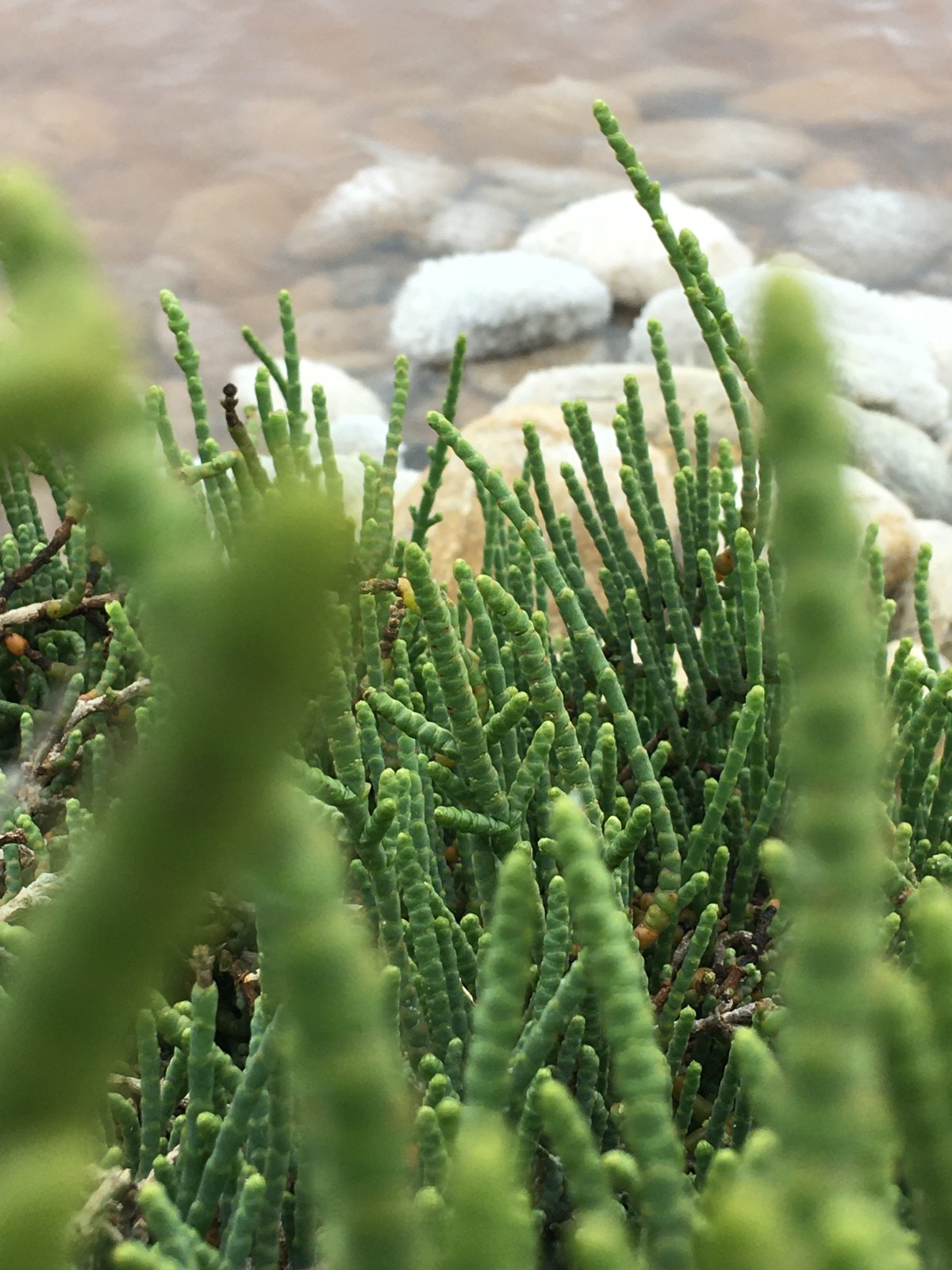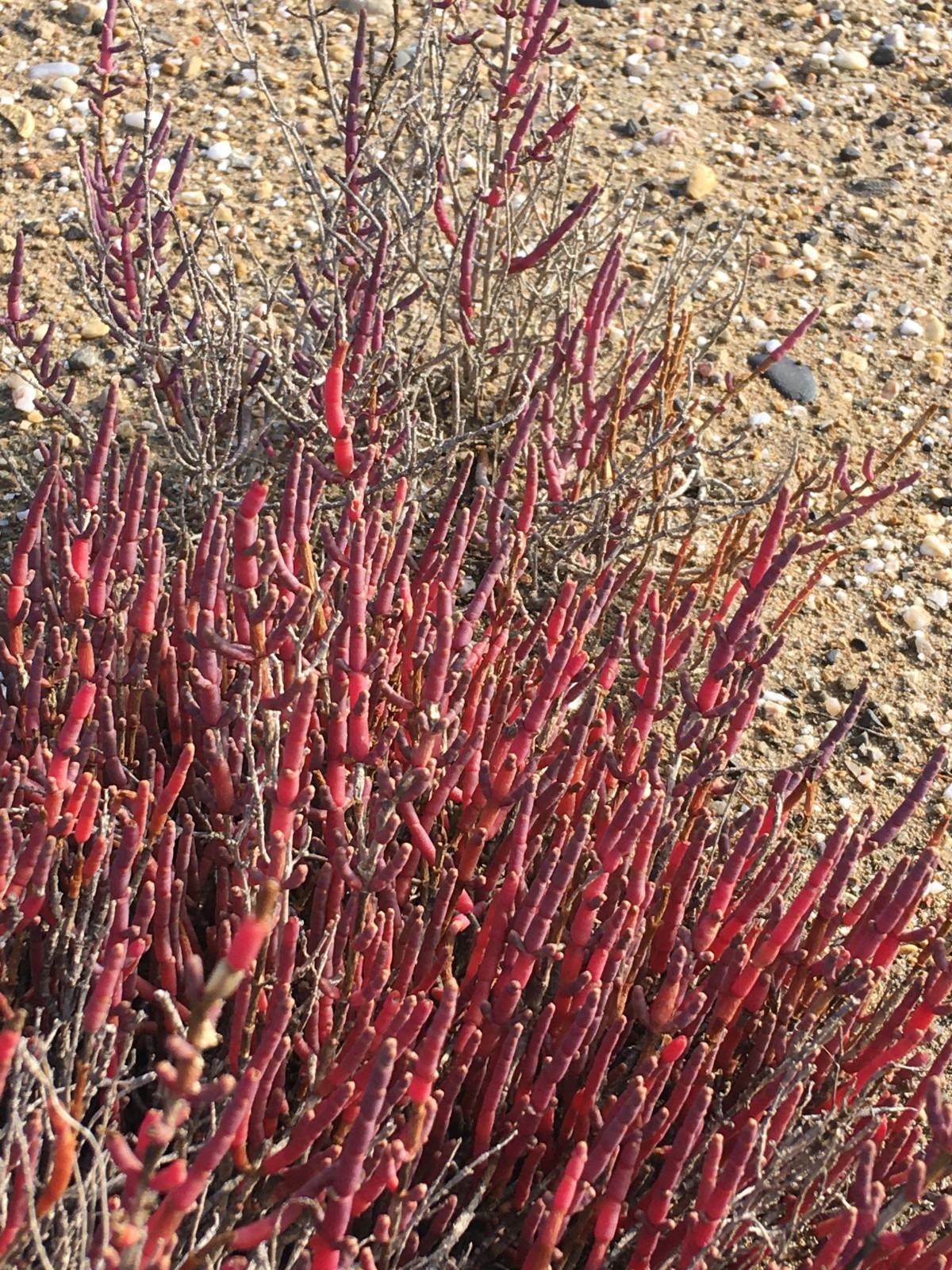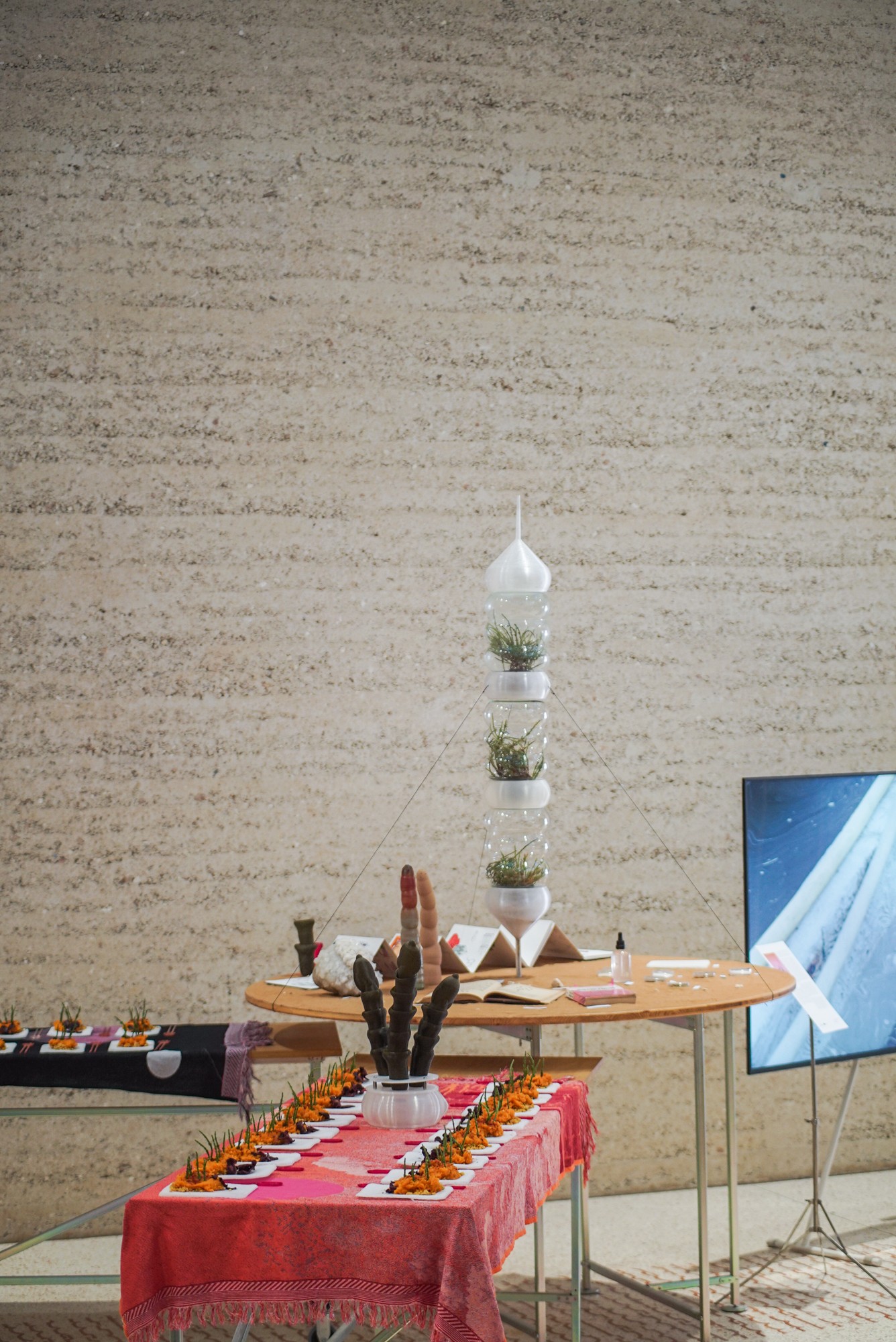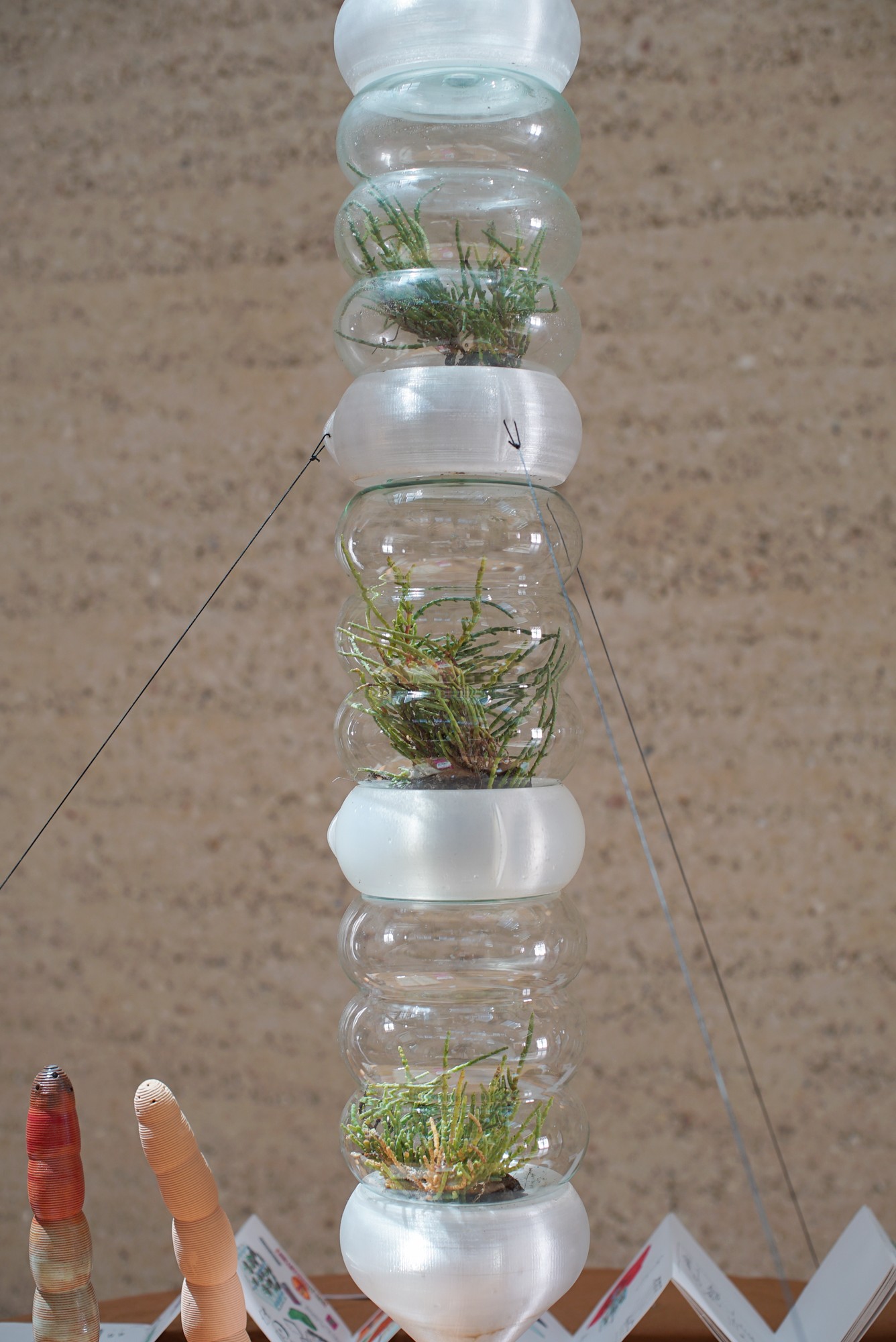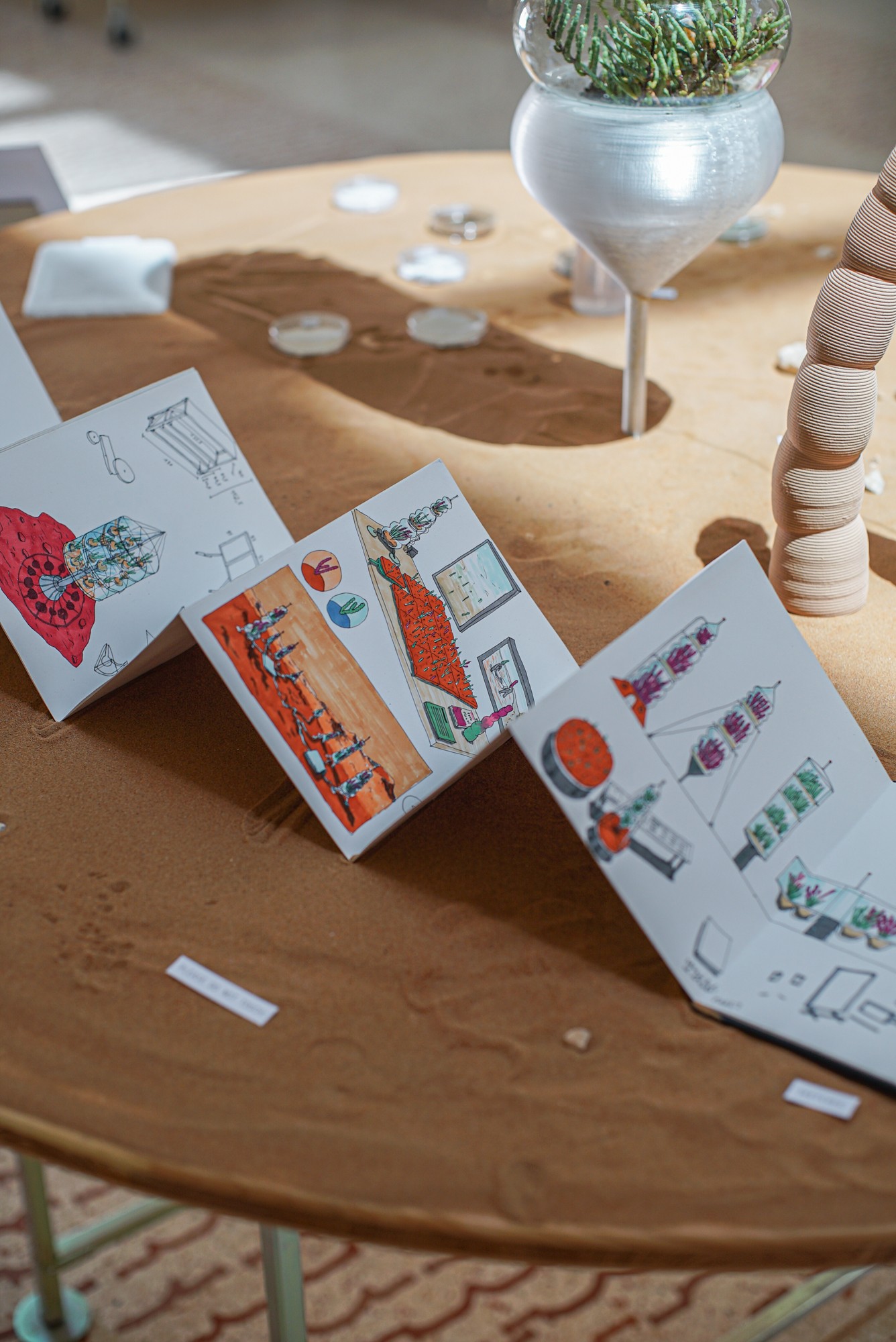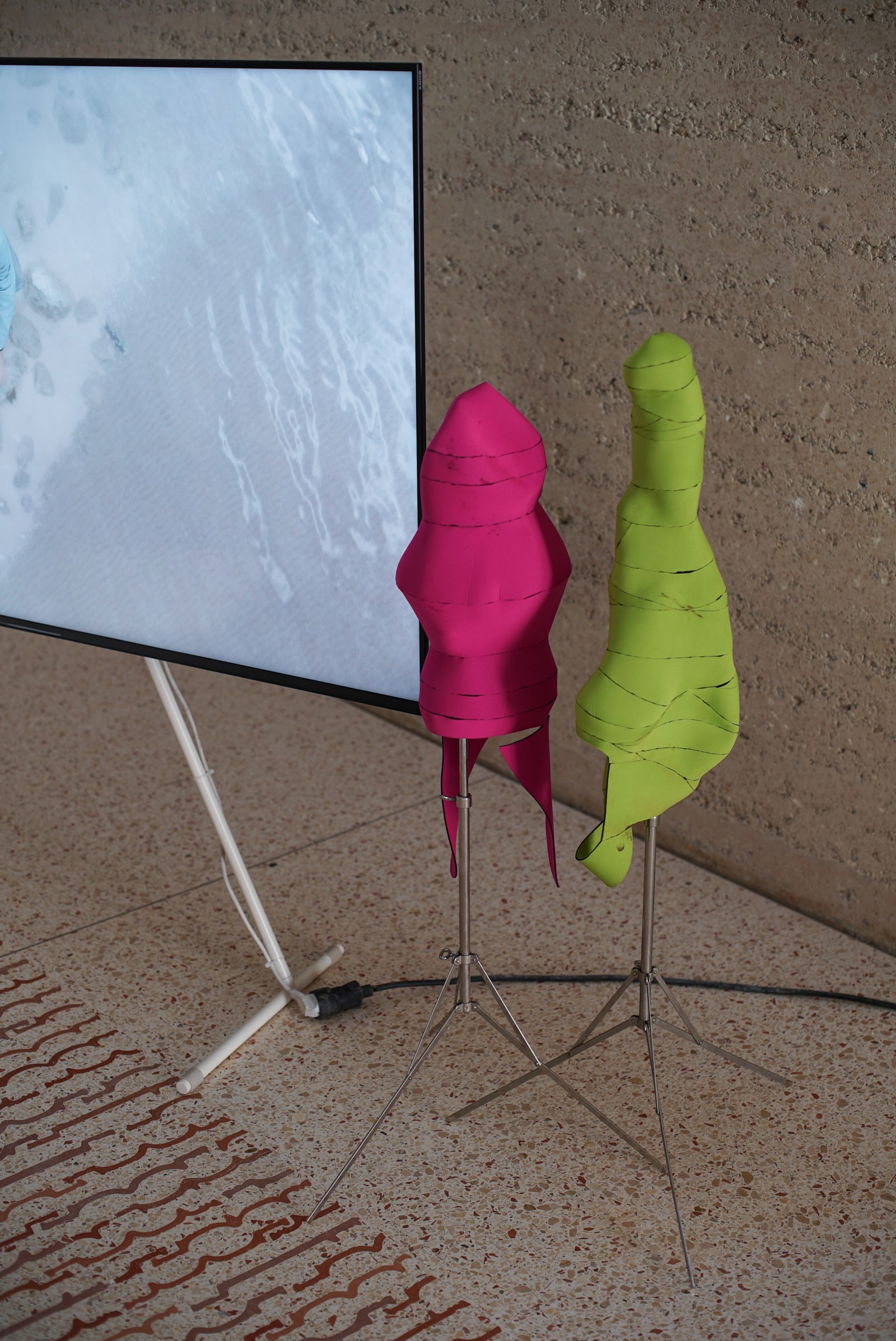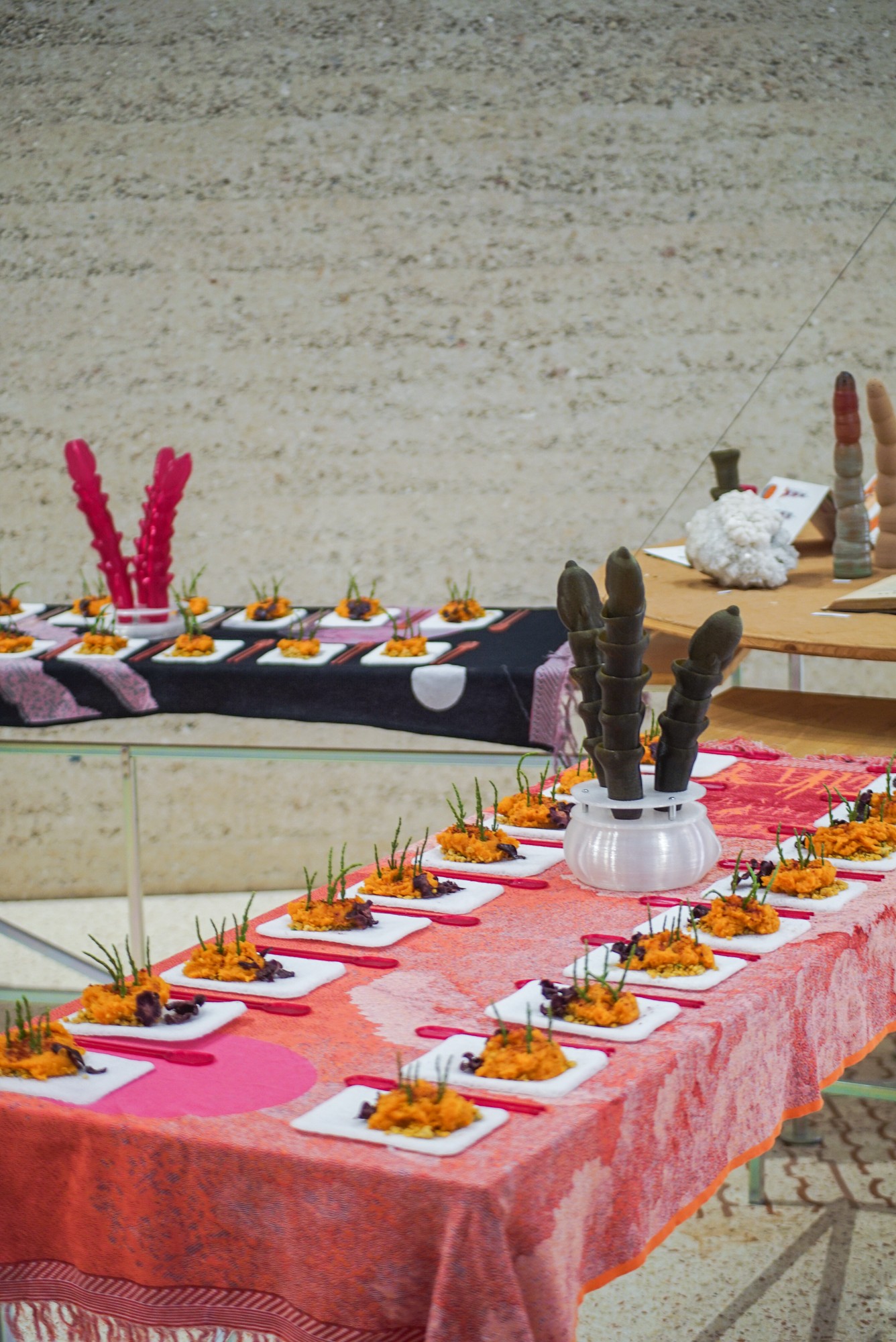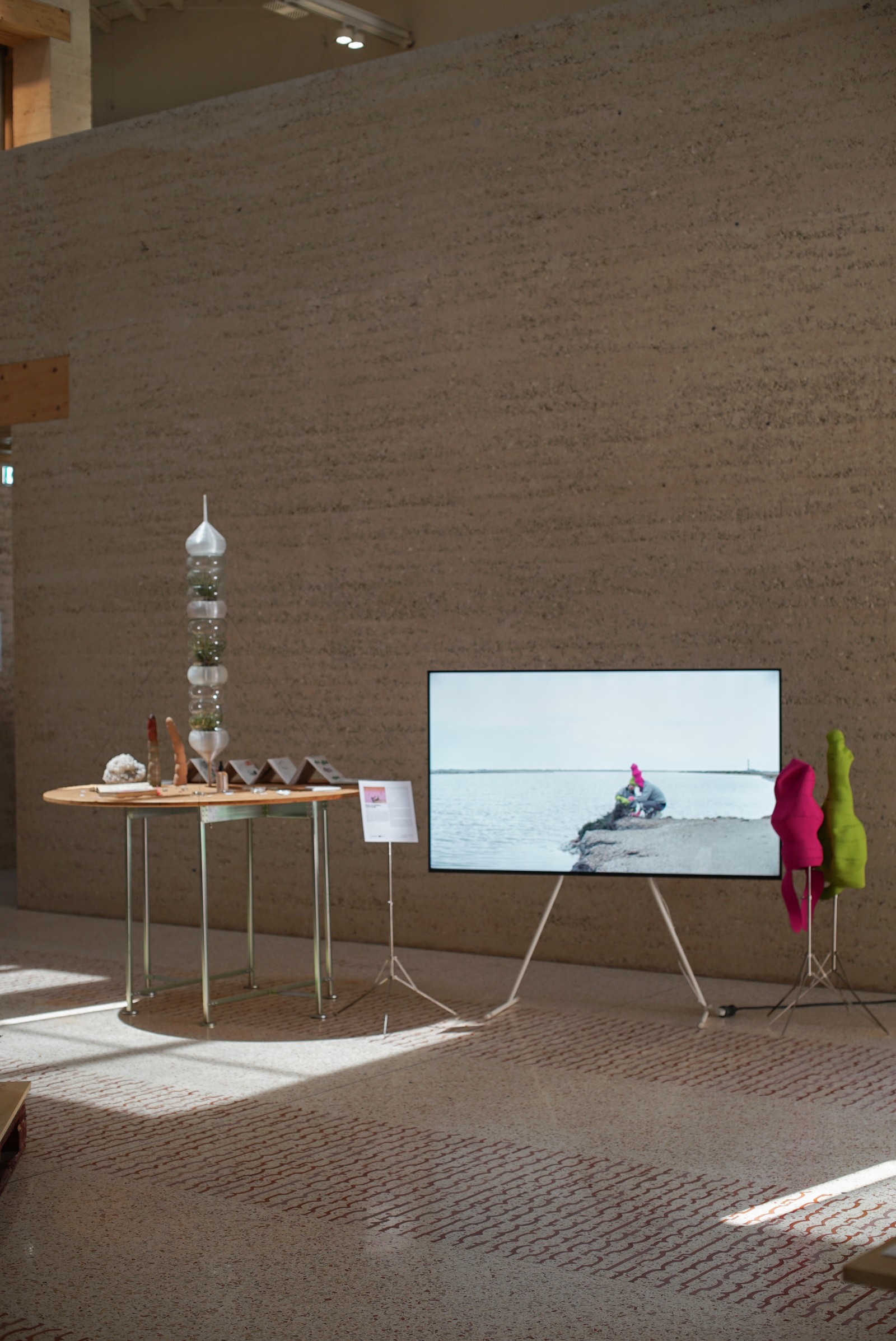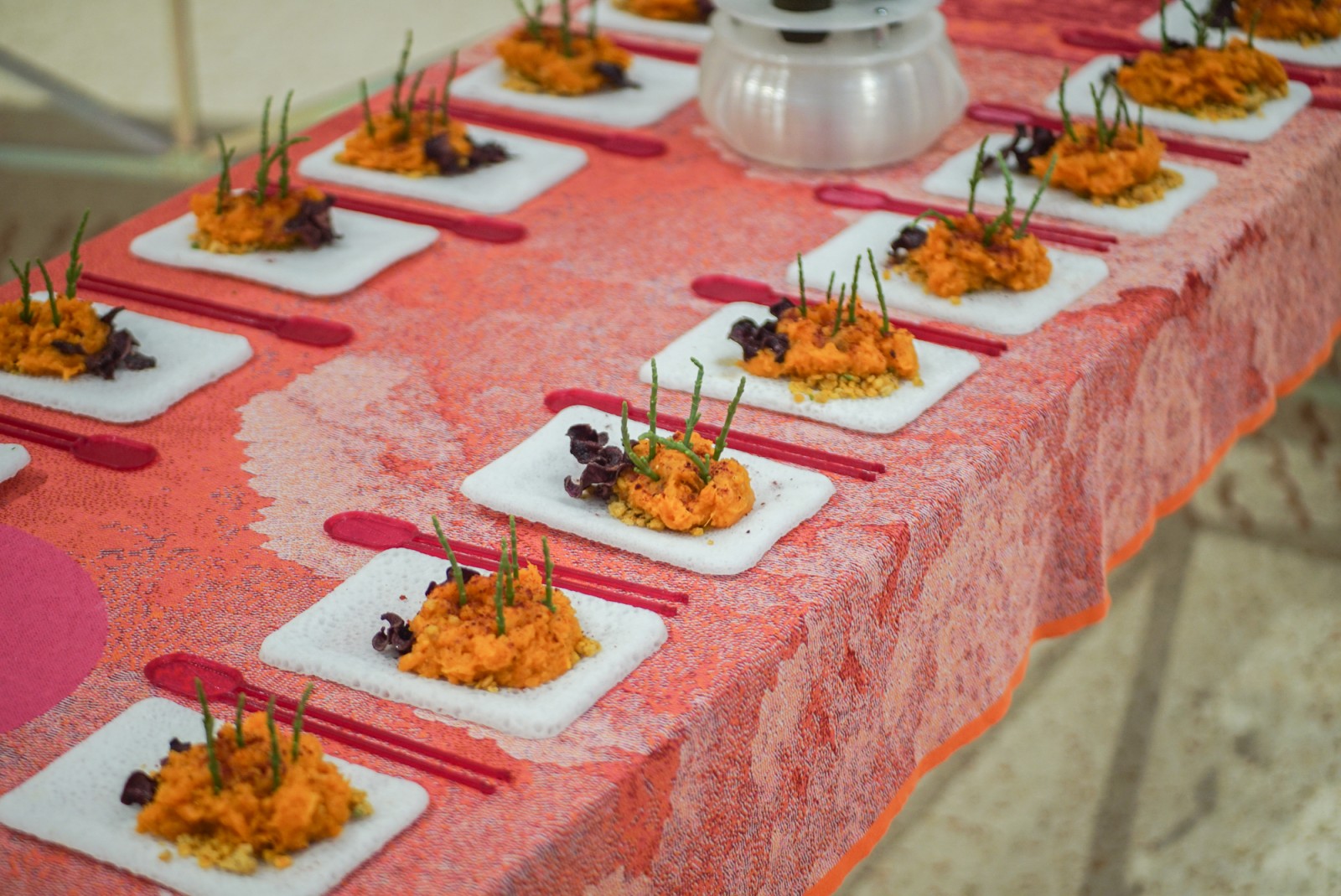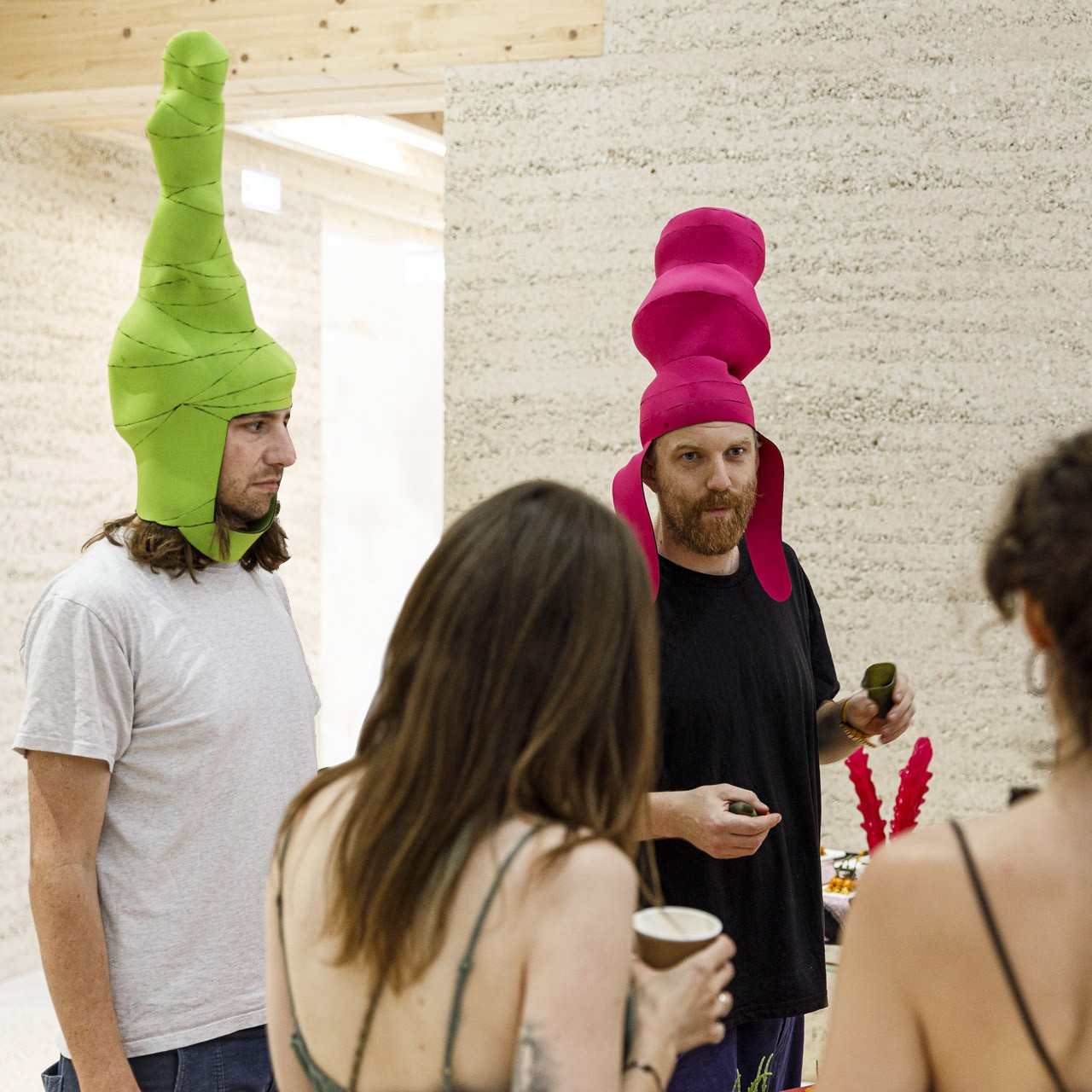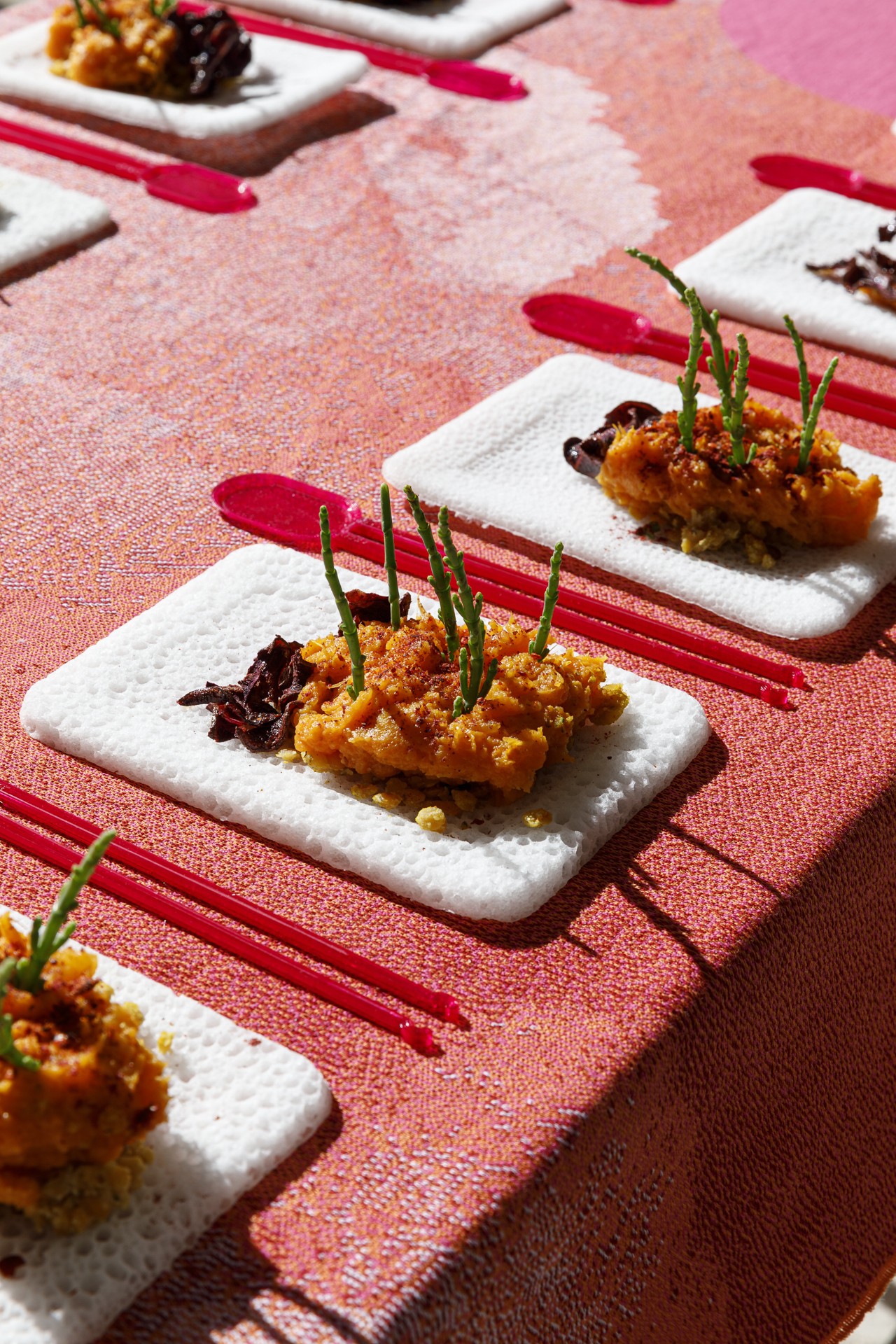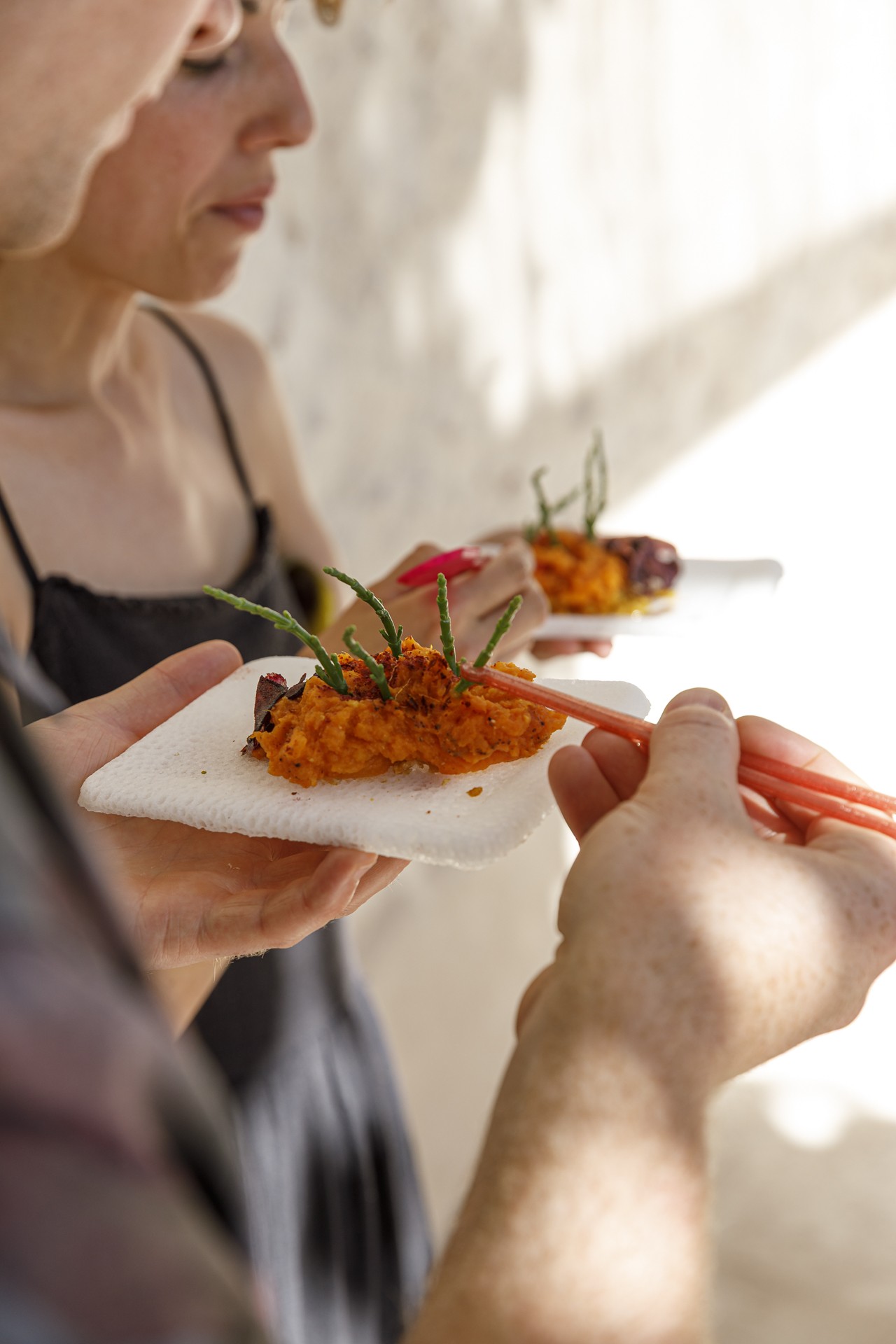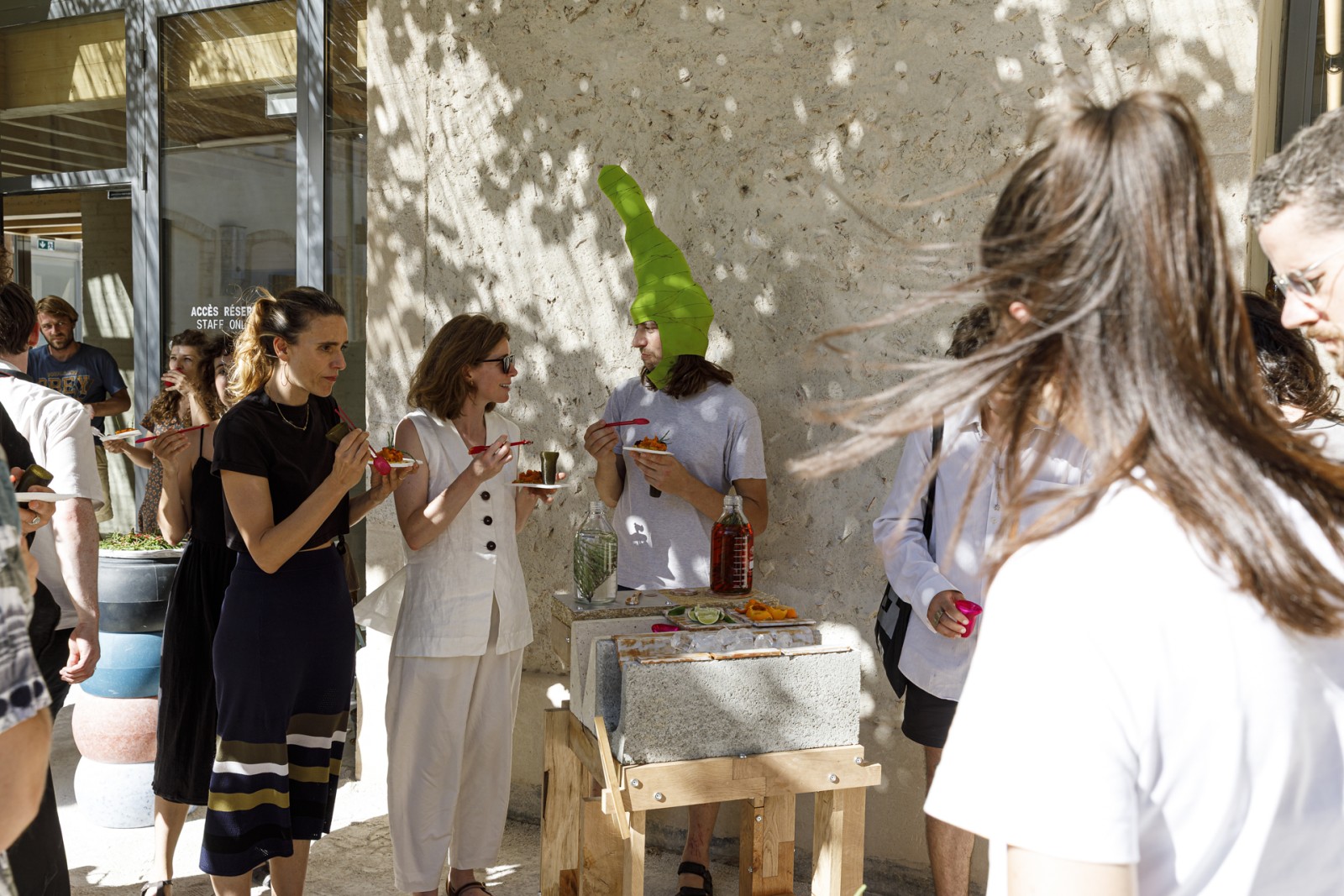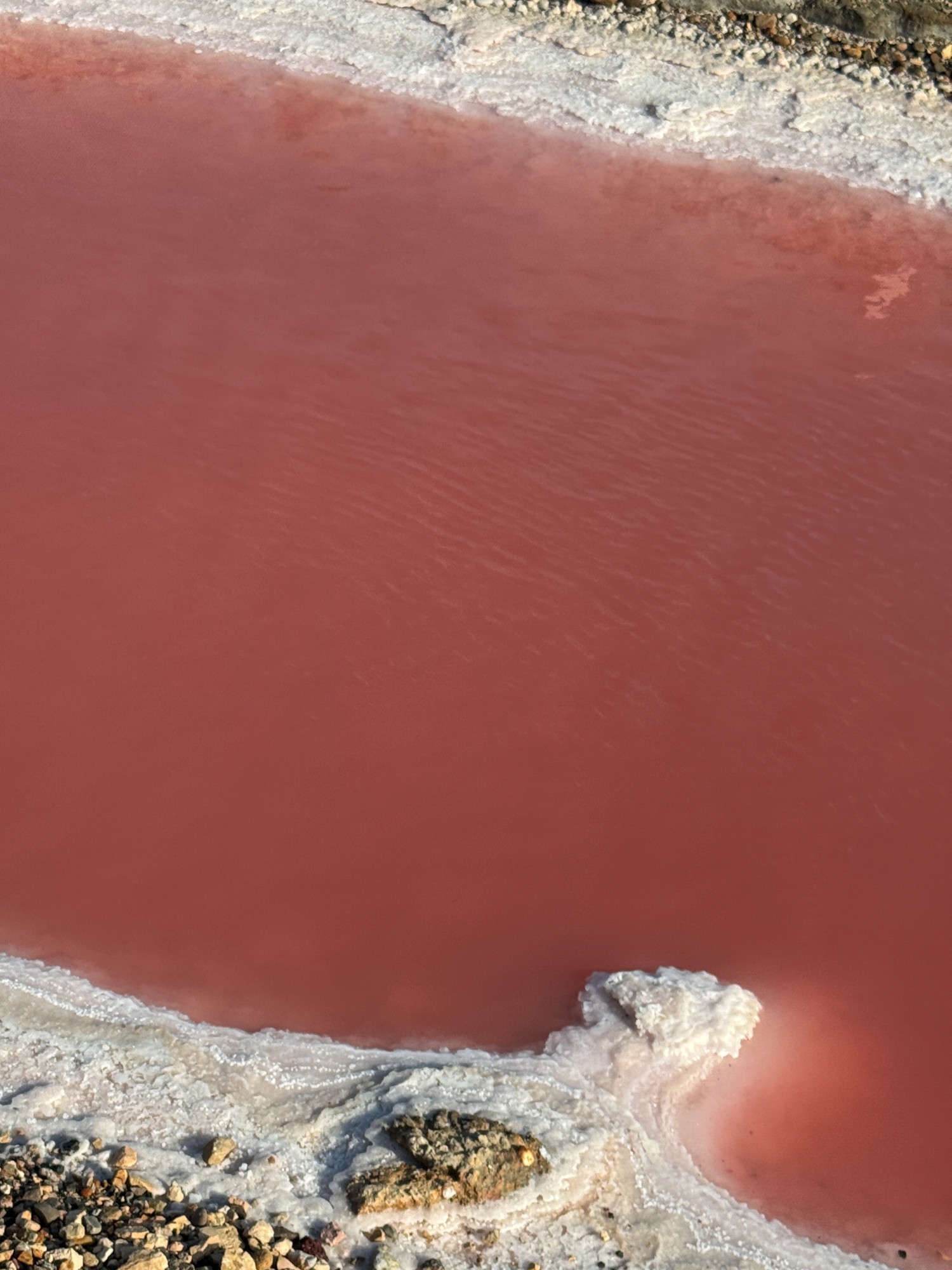Are these images taken on Earth, or are they actually shot on another planet? The landscape appears dystopian. Bright red puddles surrounded by mud and rocks. The liquid is saturated with some salt, crystallizing everywhere white and razor-sharp. Nothing seems able to survive in these hostile conditions... except for a small plant hiding between the rocks called ‘Salicornia’.
✕ Salicornication
Our journey indeed takes us to Mars. Not the planet we know from science books, but rather a different version of this celestial body. We could call it a parallel universe or simply a another time. Wewrite the year 1907 and meet the doctor and revolutionary Alexander Bogdanov, who leads the Bolshevik Party together with Lenin. When asked about the possible perspectives of a socialist society, he simply writes the first Soviet science fiction novel.
In ‘The Red Star,’ a young Earthling is taken to Mars in a Martian spaceship. About 250 years ahead of Earth, the Martians introduce him to their just society, where class and gender inequalities have long been overcome and efforts are underway to end climate change and resource scarcity, which were caused by former rulers. He is shown the glass cities of Mars and the coasts covered with red plants, where the revolution once began. After an interplanetary love affair and some turmoil, the Martians finally bring him back to Earth, years before the October Revolution and decades before humanity causes the very environmental disasters that the Martians warned about as early as 1907.
The plant called ‘Salicornia’ has been used for centuries in the manufacture of glass and soap. It is edible, very healthy and super tasty. It is one of the few plants that can survive in highly saline conditions (three times as much salt as seawater). But the plant's true superpower lies in its ability to create cooperation rather than conflict wherever it grows. The trick: it encapsulates the life-threatening salt concentration in its vacuoles, creating an environment in which other plants, animals and fungi can survive. And last but not least: the more salt the plant absorbs, the more its colour changes. Ultimately, it is just as bright red as the plants that grow in the salt marshes of Mars in Bogdanov's ‘The Red Star’. It then releases countless resilient seeds and dies, continuing its collaborative pioneering work in the next generation.
While thinking about Martian socialism, Bogdanov comes up with the idea of Martian science, which he is so enthusiastic about that he publishes it independently of the novel in 1913. With his ‘Tektology,’ he develops a general organisational science that examines animals, plants and machines, human behaviour and chemical reactions, crystal lattices, warfare, language and sociology (...) in equal measure. Tektology is concerned with nothing less than extracting organisational patterns and systems of relationships from animate and inanimate matter in order to use them as blueprints for building new social orders after the revolution. In doing so, Tektology anticipates much of what would become known decades later as systems theory and cybernetics.
The Earthling wants to know why a peaceful socialism is possible on Mars, while Earth is ruled by a warmongering “free” market. The Martians explain that this is due to the lack of bioregions. There are far fewer mountains, canyons and oceans on Mars, and because of its smaller diameter, people on Mars have always been much more closely connected. At Atelier Luma, we conduct research into bioregional materials and processes. We are continuing this approach and expanding it in line with Bogdanov's tectology: what can we learn from local plants and minerals about future societies?
Invited by Atelier Luma, we travel to southern France and meet biologist Hugo Fontes in the vast Camargue nature reserve. We tell him about Tektology, our interest in everything and the idea of drawing conclusions about social contexts from seemingly irrelevant phenomena. Equipped with waders, we roam the salty Martian landscapes until Hugo stops in front of an inconspicuous plant. ‘Where it grows, there is no competition; where it grows, cooperation arises! Perhaps “Salicornia” is exactly what you are looking for.’
This results in Salicornia-shaped wetsuits that allow the wearer to get closer to the delicate plants in the wild. A film, an installation and a dinner performance all revolving around Salicornia. Everything is made from materials that can be produced from Salicornia. Based on the glass cities, houses and factories of Mars, we design vertical greenhouses from the material that for centuries could only be produced with the help of Salicornia. The plates are made from a foam based on salt and Salicornia ash. The glasses and tweezers spoons are made from a bioplastic derived from the bacteria that Salicornia cooperates with at its roots. There are Salicornia-shaped salt shakers, woven tablecloths with Salicornia patterns, and on the table covered with Martian sand lies the first edition of Tektologie from 1913. Finally, 33 invited guests at the Magasin Electrique on the LUMA Arles site enjoy an experimental dinner, where small models of Salicornia are eaten with Martian sand, while Salicornia cocktails are served to toast the Salicornication.
Credits:
A projekt by Peter Behrbohm and Anton Steenbock
Photographs: Peter Behrbohm, Adrian Deweerdt & Anton Steenbock
Many thanks to Sandra Revuelta Albero, Daniel Bell, Henna Burney, Mathieu Menard, Carlotta Borgato and Clara Kernreuter from Atelier Luma for their tremendous help and for allowing us to use their workshops and machines. Many thanks also to Hugo Fontes and Philippe Lambret from the Tour du Valat Nature Reserve and, last but not least, to the RUBBLE design collective, who created the bar in the last picture.
This project was created as part of the LINA Community scholarship at Atelier Luma Arles, 2025.
